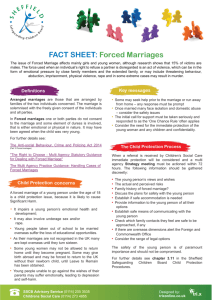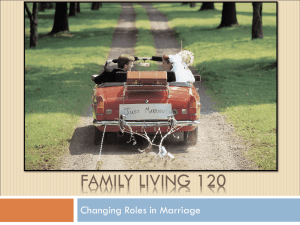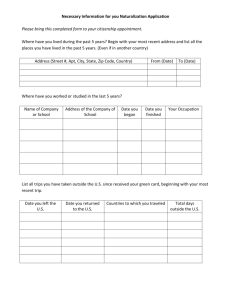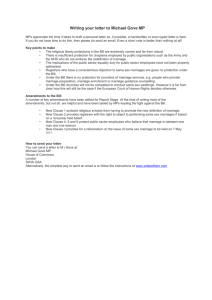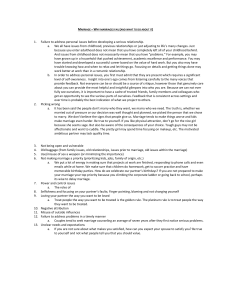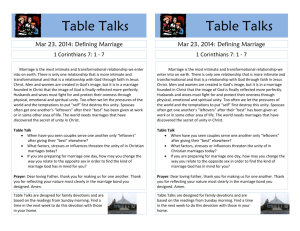File
advertisement
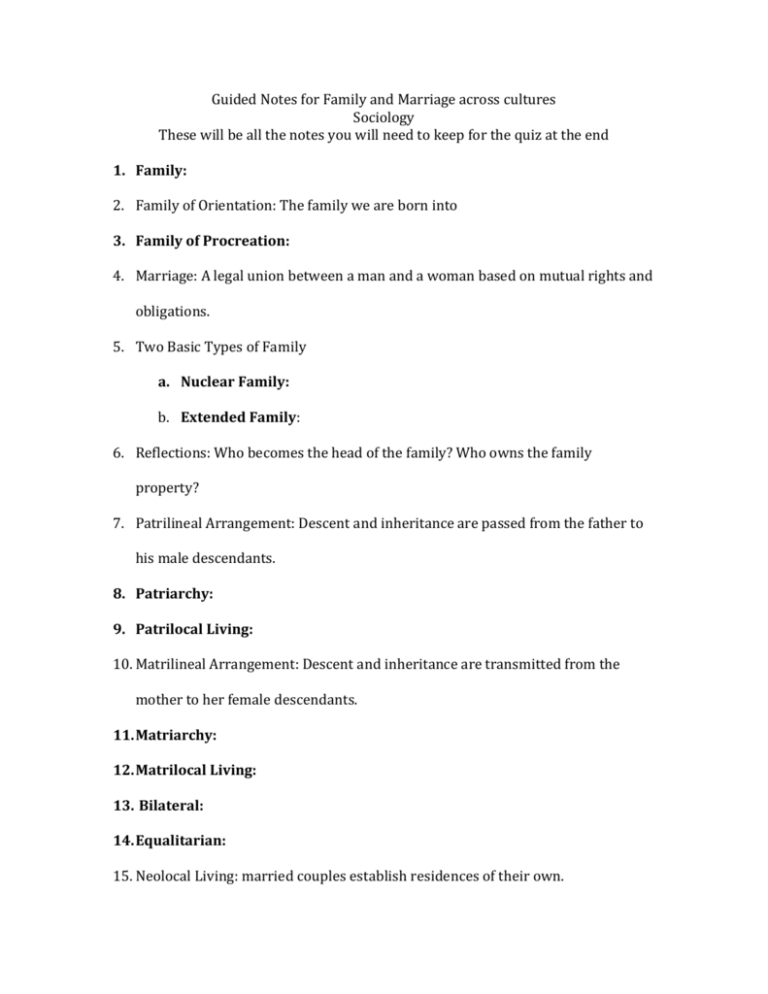
Guided Notes for Family and Marriage across cultures Sociology These will be all the notes you will need to keep for the quiz at the end 1. Family: 2. Family of Orientation: The family we are born into 3. Family of Procreation: 4. Marriage: A legal union between a man and a woman based on mutual rights and obligations. 5. Two Basic Types of Family a. Nuclear Family: b. Extended Family: 6. Reflections: Who becomes the head of the family? Who owns the family property? 7. Patrilineal Arrangement: Descent and inheritance are passed from the father to his male descendants. 8. Patriarchy: 9. Patrilocal Living: 10. Matrilineal Arrangement: Descent and inheritance are transmitted from the mother to her female descendants. 11. Matriarchy: 12. Matrilocal Living: 13. Bilateral: 14. Equalitarian: 15. Neolocal Living: married couples establish residences of their own. 16. Marriage arrangements a. Monogamy: The marriage of one man and one woman b. Polygamy: c. Polygyny: d. Polyandry: The marriage of one woman to two or more men at the same time. 17. Choosing a Mate a. Exogamy: b. Endogamy: mate-selection morns that require individuals to marry within their own kind c. Homogamy: d. People are most likely to know and prefer to marry others like themselves. e. Most marriages occur between individuals who are about the same age f. People tend to find marriage partners within their own communities or neighborhoods. g. Heterogamy: 18. Reflection: What are reasons that heterogamy marriages are increasing? 19. Nature of the American Family a. Families are what in American? Guided Notes for Family and Marriage in America Sociology These will be all the notes you will need to keep for the quiz at the end 20. Why do people get married? 21. What are the Sociological Factors? 22. What are the causes for Divorce? 23. Future of Marriage a. Optimistic Look: b. Pessimistic Look: i. Out of wedlock birth rates are increasing ii. Marriage rates are falling iii. Marriage promotion isn’t working 24. Family Violence: (write down the statistics of violence) 25. Changes in Marriage and Family a. Blended Families: b. Single Parent families: 25% of American families compared with 14% globally c. Who is the head of the household in single parent families? d. What effect does that have on children? e. Childless Marriages: 20% of couples /Increase due to career goals of women/moral issues about raising children in an immoral world f. Dual-Employed Marriages g. Cohabitation: 25% of adults have cohabitated/only 25% stay together for more than 4 years/ higher risk of divorce h. Same-sex domestic partners i. Single Life j. Boomerang Kids: 26% of adults ages 18-44 live with their parents/marrying later and reducing cost of living/puts a financial strain on older parents/not privacy 26. What are the 5 functions of the family: 27. What does conflict theory have to say about families? 28. Symbolic Interactionism states that children watch parents to learn how to interact. They learn what is expected and create a self-image. Good experiences equal a healthy development.


